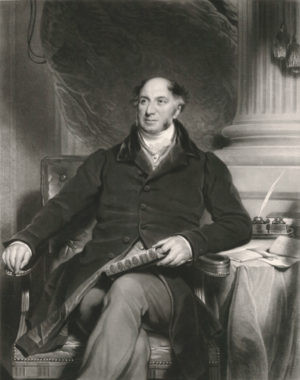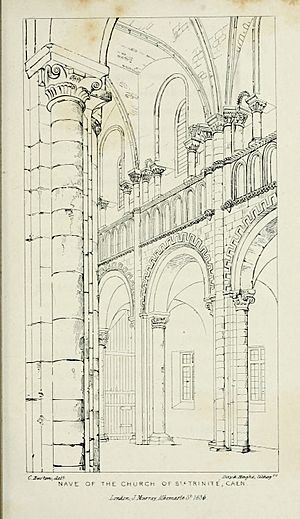Henry Gally Knight facts for kids
Henry Gally Knight (born December 2, 1786, died February 9, 1846) was an important British politician, a keen traveler, and a talented writer. He was also a respected member of the Royal Society, a group for top scientists and thinkers.
Contents
About Henry Gally Knight
Henry Gally Knight was the only son of Henry Gally. He went to famous schools like Eton and Trinity Hall, Cambridge. When he was older, he inherited large family estates, or properties, at Firbeck and Langold Park in 1808.
His Public Life
Henry Gally Knight held several important jobs. He was chosen as the High Sheriff of Nottinghamshire for 1814–1815. This was a very old and important role, like a chief officer in the county. He was also a deputy-lieutenant of Nottinghamshire.
He became a Member of Parliament (MP) several times. An MP is someone elected to represent people in the British government. He represented different areas like Aldborough, Malton, and North Nottinghamshire. Even though he was a good speaker, he didn't speak very often in Parliament. He also helped with a group that worked to improve fine arts.
A Poet's Playful Jab
In 1818, a famous poet named Lord Byron wrote a funny poem about Henry Gally Knight. The poem playfully suggested that Knight wasn't just a poet, but also a "dandy." A dandy was someone who cared a lot about their clothes and appearance. It was a lighthearted tease from one writer to another!
Firbeck Hall and Royal Society
Henry Gally Knight owned a large house called Firbeck Hall in Rotherham. It's thought that he might have given information to the famous writer Sir Walter Scott. Scott's novel Ivanhoe is set near Firbeck Hall.
On May 20, 1841, Henry Gally Knight became a Fellow of the Royal Society. This honor is given to people who have made important discoveries or contributions to science and knowledge.
Family Life
Henry Gally Knight was the nephew of the novelist Frances Jacson. He married Henrietta, who was the daughter of Anthony Hardolph Eyre. Henrietta was also the widow of John Hardolph Eyre. Henry and Henrietta did not have any children.
His Writings
Henry Gally Knight wrote several adventure stories set in the Middle East. These included Ilderim, a Syrian Tale (1816), Phrosyne, a Grecian Tale, and Alashtar, an Arabian Tale (1817).
He was also an expert on architecture, which is the art of designing buildings. He wrote several important books about buildings and their history. Some of his famous architectural works include An architectural tour in Normandy (1836), The Normans in Sicily (1838), and The Ecclesiastical Architecture of Italy (1842-4). These books were known for their beautiful pictures and helped him gain more fame than his adventure stories.



